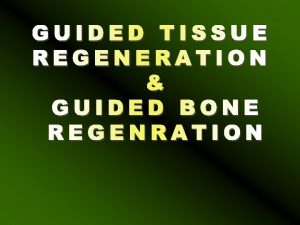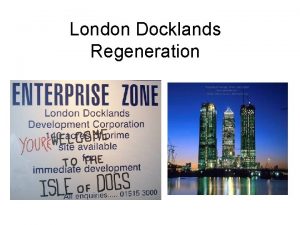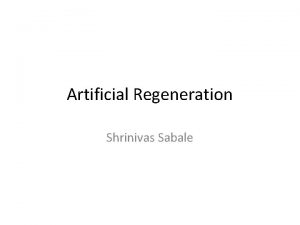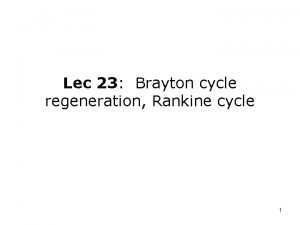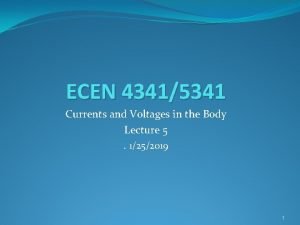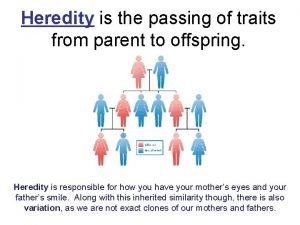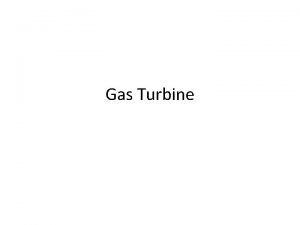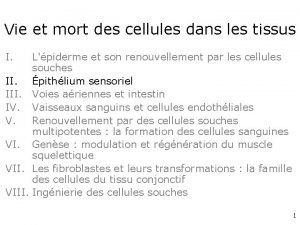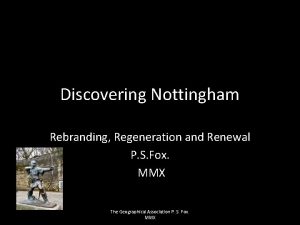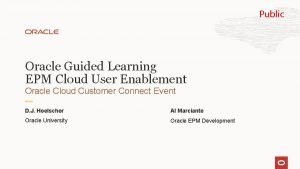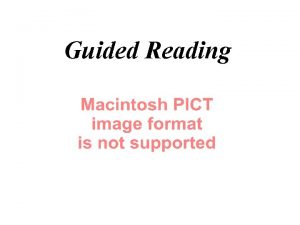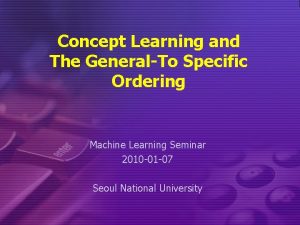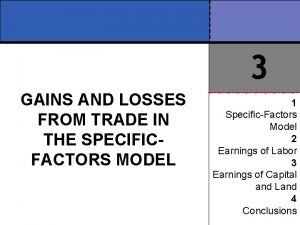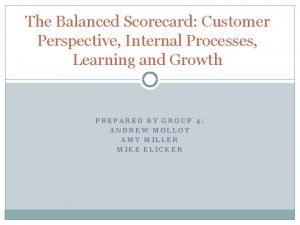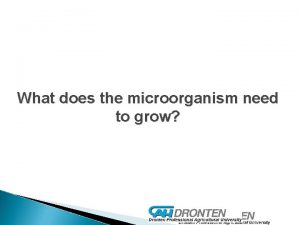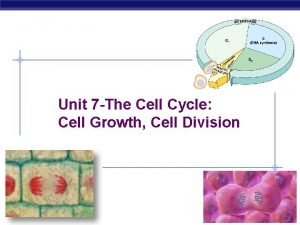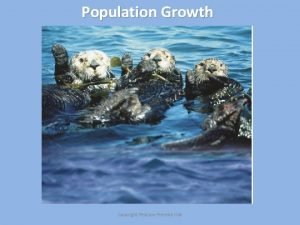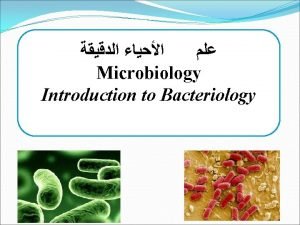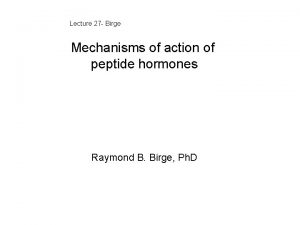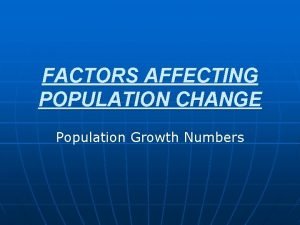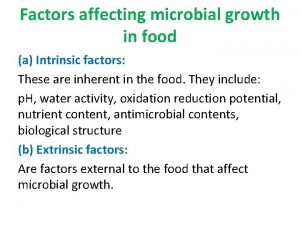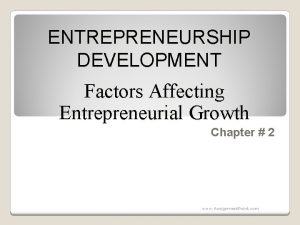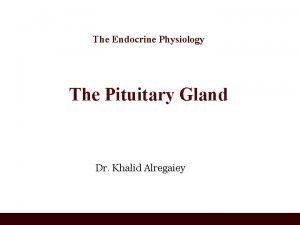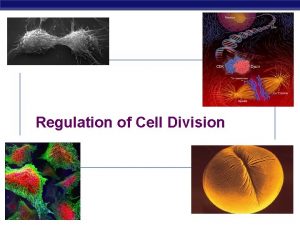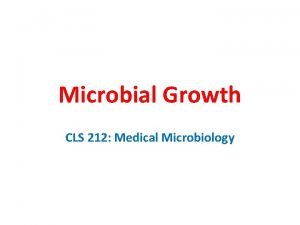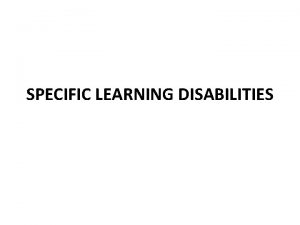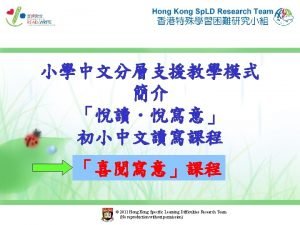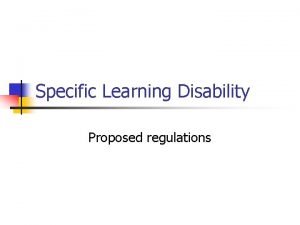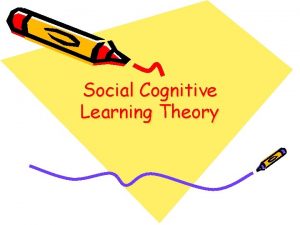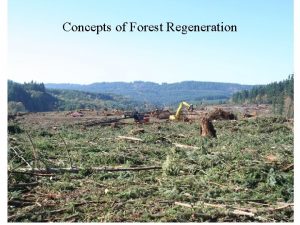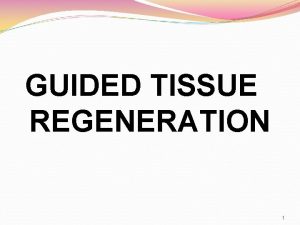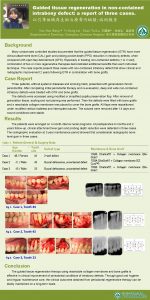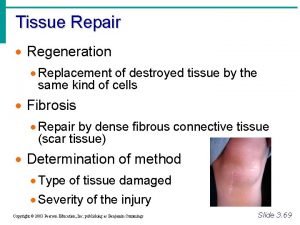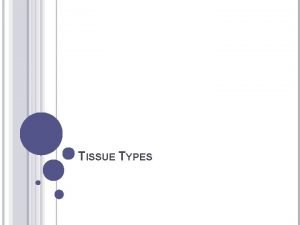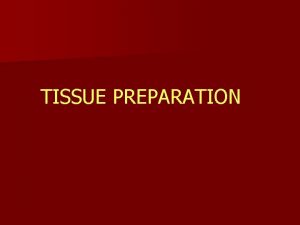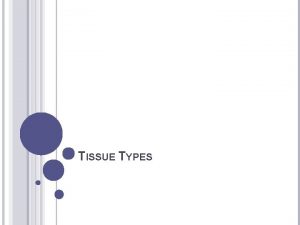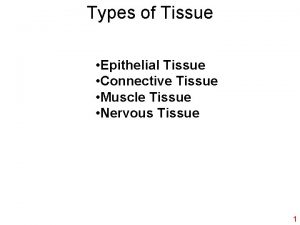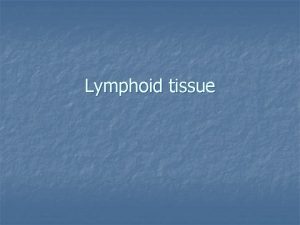GUIDED TISSUE REGENERATION AND GROWTH FACTORS Specific Learning



























































- Slides: 59

GUIDED TISSUE REGENERATION AND GROWTH FACTORS

Specific Learning Objectives The student should be able to understand answer • What is GTR and growth factor • The rationale and biologic concept for GTR • Indications and contraindications of GTR • The types, advantages, and disadvantages of GTR • Techniques of using guided tissue regeneration.

Introduction • Periodontal Regeneration is defined as a reproduction or reconstruction of a lost or injured part in such a way that the architecture and function of a lost or injured tissue is completely restored (Glossary of periodontal terminologies 1992)

What is GTR (Guided Tissue Regeneration)? • IN 1996, World Workshop in Periodontics defined GTR as ‘procedures attempting to regenerate lost periodontal tissues through differential tissue responses’. • AAP has defined GTR as ’the procedure by which a barrier is utilized to exclude epithelium from the root surfaces’.

History • 1976 - Melcher described the basic concept of cell population in periodontal regeneration which led to development of GTR. • 1982 - Nyman et al first described the clinical procedure of GTR using non absorbable barrier membrane made of cellulose acetate laboratory filter(millipore filter).

• 1982 – WL Gore et al investigated materials which would limit epithelial migration around tooth and implants. • Classic studies of Nyman(1982), Lindhe(1984), Karring(1986) and Gottlow(1986) have assumed that only periodontal ligament cells have regenerative potential.

Biologic concept of GTR • Excluding the epithelium and gingival connective tissue from the root surface during post surgical healing phase (cell exclusion) 1. Prevents epithelial migration into the wound 2. Favours repopulation of the area from the periodontal ligament cells and bone cells.



To reemphasize, Following flap elevation, the instrumented root surface can be repopulated by 1. epithelial cells, 2. gingival connective cells, 3. bone cells and 4. periodontal ligament cells.

The biologic concept of GTR: • A physical barrier (membrane) is placed to cover the area in which the regenerative process is to take place. • The barrier is properly shaped and positioned to form a space around bony defect and the root surface.


Indications for GTR • • 2 or 3 walled intrabony defects Grade II furcation defects Circumferential osseous defects Recession defects Alveolar ridge augmentation Repair of apicoectomy defects. Osseous fill around immediate implants and repair around failing implants.

Contra Indications for GTR • • Infection at the site of defect. Medically compromised, unfit for surgery. Poor oral hygiene, smokers. Reduced attached gingiva width and thickness Advanced lesions with reduced bone support Tooth mobility Multiple defects Furcation defect with short root trunks

Objectives of an ideal GTR membrane It should be • Biocompatible; allow tissue integration • Chemically inert • Non antigenic • Non toxic and non carcinogenic • Easily retrievable in case of complications • Easily adaptable to defects and be available in different designs

Objectives……continued • Easily sterilizable • Easy to handle during surgeries • Sufficiently rigid to allow space between root and membrane • Easily storable with long shelf life • Not too expensive • Not resorb too early before its stipulated time


Classification of GTR • Gottlow 1993 First generation membranes: Non resorbable membranes 1. Millipore filters 2. Expanded poly tetra fluoroethylene membrane( e. PTFE) Gore tex 3. Nucleopore membrane 4. Rubber dam 5. Ethyl cellulose 6. Semi permeable silicon barrier

• Second generation Membranes: Resorbable membrane 1. Collagen- Biomend, Perioguide, Biostite 2. Polylactic acid membrane- Guidor, Atrisorb, Resolut, 3. Vicryl mesh 4. Cargile membrane 5. Oxidized cellulose membrane




Procedural guidelines

Placement of incision

Flap reflection

Debridement of the defect area

Placement of membrane

Sutures in place

Mattress suture

Membrane removal


Selection of the barrier membrane

Bioresorbable Proguide Biocollagen Periocol-GTR Bioguide Biomesh Non resorbable CYTOPLASA

Clinical applications





Procedure Preparation of trapezoidal flap

Preparation of trapezoidal flap

Flap reflection De-epithelization

Debridement Root concavity

Membrane stabilization


Guided Bone Regeneration(GBR) • The osseous defects are covered with a barrier membrane, which is adapted closely to the surrounding bone surface. • Non osseous cells(epithelial cells and fibroblasts) are inhibited and space is preserved between bone and membrane for the osteoblasts derived from periosteum and bone to populate the area and regenerate bone. • Less membrane exposure also makes less infection and better regeneration.




Growth factors Growth factor is a general term to denote a class of polypeptide hormones that stimulate a wide variety of cellular events such as proliferation, chemotaxis, differentiation and production of extracellular matrix proteins

Growth factor families Platelet-derived growth PDGF-AA Factors PDGF-BB PDGF-AB Epidermal growth factors Vascular endothelial cell growth factor Epidermal growth factor Transforming growth factor-α Fibroblast growth factors Amphiregulin Acidic fibroblast growth factor (FGF-α) Insulin like growth factors Basic fibroblast growth factor (FGF-β) Insulin like growth factor-I Transforming growth factors Insulin like growth factor- II Transforming growth factor- β Bone morphogenetic proteins 2 and 8

Bone Morphogenetic Proteins • Bone morphogenetic proteins are osteoinductive factors that may have the potential to stimulate bone repair. • These factors do not stimulate proliferation and migration of osteoblasts. • Since both growth factors and BMP’s are found within bone matrix, it is possible that demineralized freeze-dried bone contains small amounts of these proteins. • Primary action of BMP’s is to differentiate mesenchymal precursor cells into cartilage and

Enamel matrix proteins • The proteins of the enamel matrix can be divided into two major groups: amelogenins and enamelins. • The biologic concept is that the application of enamel matrix (amelogenins) proteins may promote periodontal regeneration because it mimics events that took place during the development of the periodontal tissues. • The use of enamel matrix proteins has routinely produced 60% to 70% of new bone, periodontal ligament and acellular cementum

Procedure




Summary and conclusion • The principle of GTR lies in the establishment of cells of PDL, to selectively repopulate the root surface. • Clot establishment and stabilization, site selection, epithelial cell exclusion, space provision, neovascularisation and complete gingival coverage are favourable characteristics in GTR procedure.

……contd • The use of GTR membranes can significantly enhance the periodontal regeneration with cementum formation with inserting PDL fibres, the complete pd regeneration is still not reported. • In future, GTR can be combined with various biological growth factors that allowed for selectively controlling the type of cells proliferated from the fibroblast precursors.

References • Carranzas clinical Periodontology 10 thedition • Shalu bathla - 2 nd edition
 Gbr in periodontics
Gbr in periodontics Gas turbine with regeneration
Gas turbine with regeneration Was the london docklands regeneration a success
Was the london docklands regeneration a success Objectives of artificial regeneration
Objectives of artificial regeneration Brayton cycle with regeneration problems
Brayton cycle with regeneration problems Fiat doblo dpf regeneration procedure
Fiat doblo dpf regeneration procedure Planarian regeneration
Planarian regeneration Heredity
Heredity Classification of gas turbine
Classification of gas turbine Cellules ciliées régénération
Cellules ciliées régénération Nottingham regeneration
Nottingham regeneration Plant growth definition
Plant growth definition Primary growth and secondary growth in plants
Primary growth and secondary growth in plants Primary growth and secondary growth in plants
Primary growth and secondary growth in plants Vascular ray
Vascular ray Perforation plates
Perforation plates Types of tissue
Types of tissue Transitional epithelium
Transitional epithelium Specific gravity eq
Specific gravity eq Specific volume to specific gravity
Specific volume to specific gravity Cuadro comparativo de e-learning
Cuadro comparativo de e-learning How to find decay factor
How to find decay factor Growthchain
Growthchain Geometric growth population
Geometric growth population Neoclassical growth theory vs. endogenous growth theory
Neoclassical growth theory vs. endogenous growth theory Organic vs inorganic growth
Organic vs inorganic growth User enablement
User enablement Guided reading objectives
Guided reading objectives Explain general to specific ordering of hypothesis
Explain general to specific ordering of hypothesis Specific factors model numerical example
Specific factors model numerical example Limiting factor
Limiting factor Is wood biotic or abiotic
Is wood biotic or abiotic Abiotic vs biotic factors
Abiotic vs biotic factors Abiotic factors and biotic factors
Abiotic factors and biotic factors Factors of 8
Factors of 8 Common factors of 10 and 20
Common factors of 10 and 20 Gcf monomials calculator
Gcf monomials calculator Balanced scorecard customer perspective
Balanced scorecard customer perspective Factors affecting microbial growth in food
Factors affecting microbial growth in food Growth factors mitosis
Growth factors mitosis Copyright
Copyright Factors affecting bacteria growth
Factors affecting bacteria growth Growth factors examples
Growth factors examples Factors affecting population explosion
Factors affecting population explosion What are the intrinsic factors for microbial growth
What are the intrinsic factors for microbial growth Psychological factors affecting entrepreneurial growth
Psychological factors affecting entrepreneurial growth Where is trh produced
Where is trh produced Factors of economic growth
Factors of economic growth Coordination biology
Coordination biology Capnophile
Capnophile What is specific learning disability
What is specific learning disability Specific learning difficulty
Specific learning difficulty Learning disability definition
Learning disability definition 悅讀悅寫意
悅讀悅寫意 Specific learning disorder
Specific learning disorder Specific learning disorder
Specific learning disorder Scribbr
Scribbr Site v situation
Site v situation An abiotic factor
An abiotic factor Situation vs site factors
Situation vs site factors
